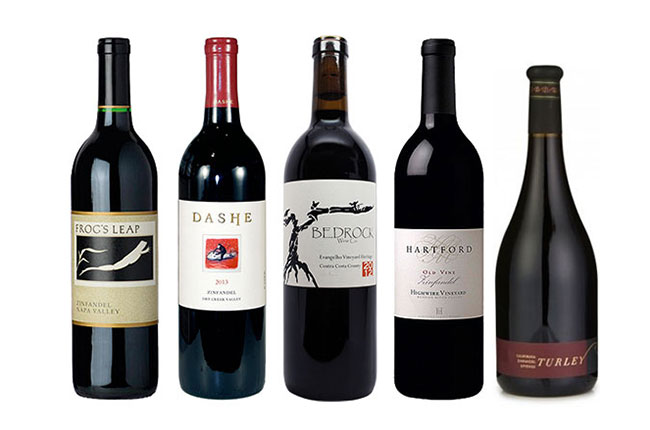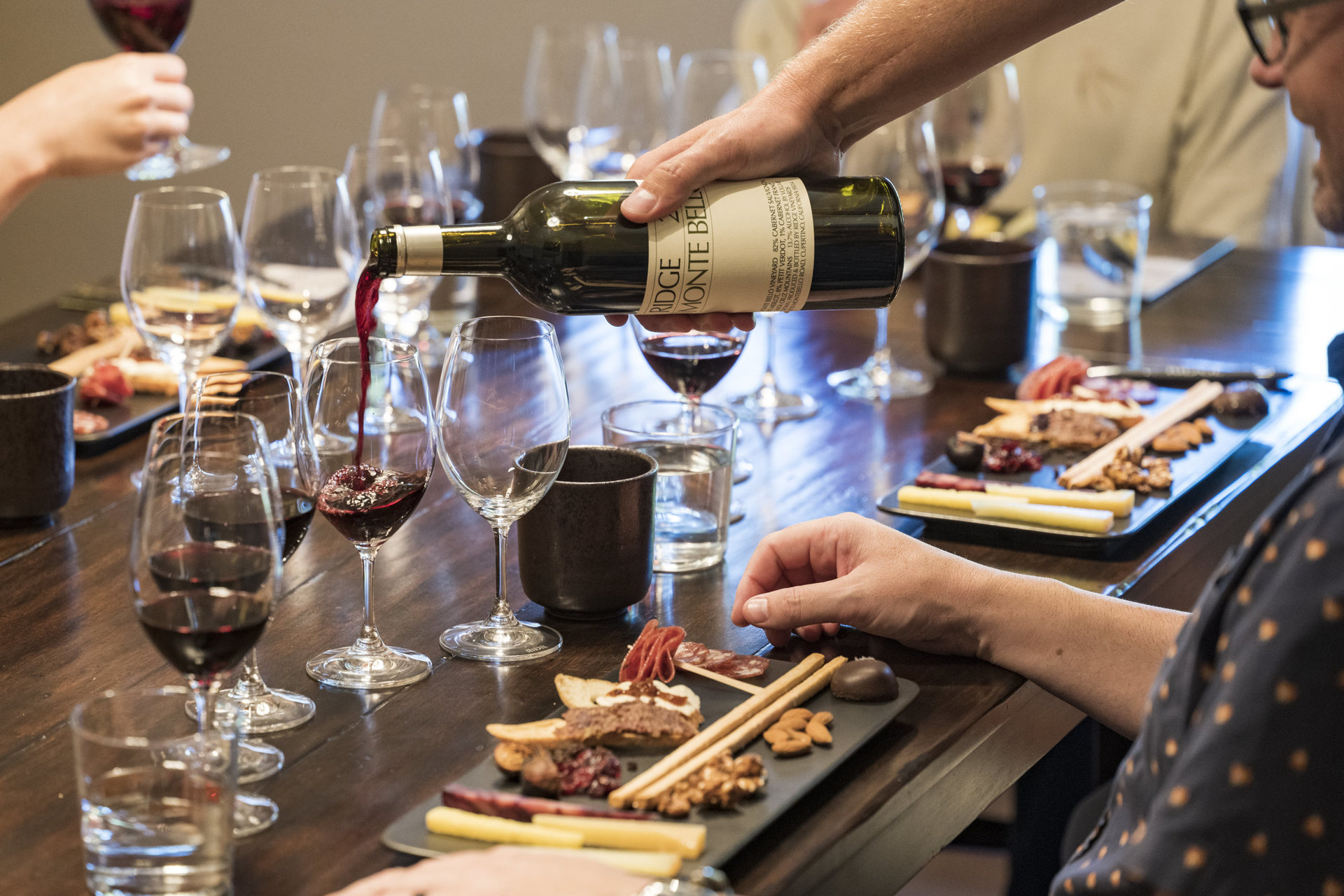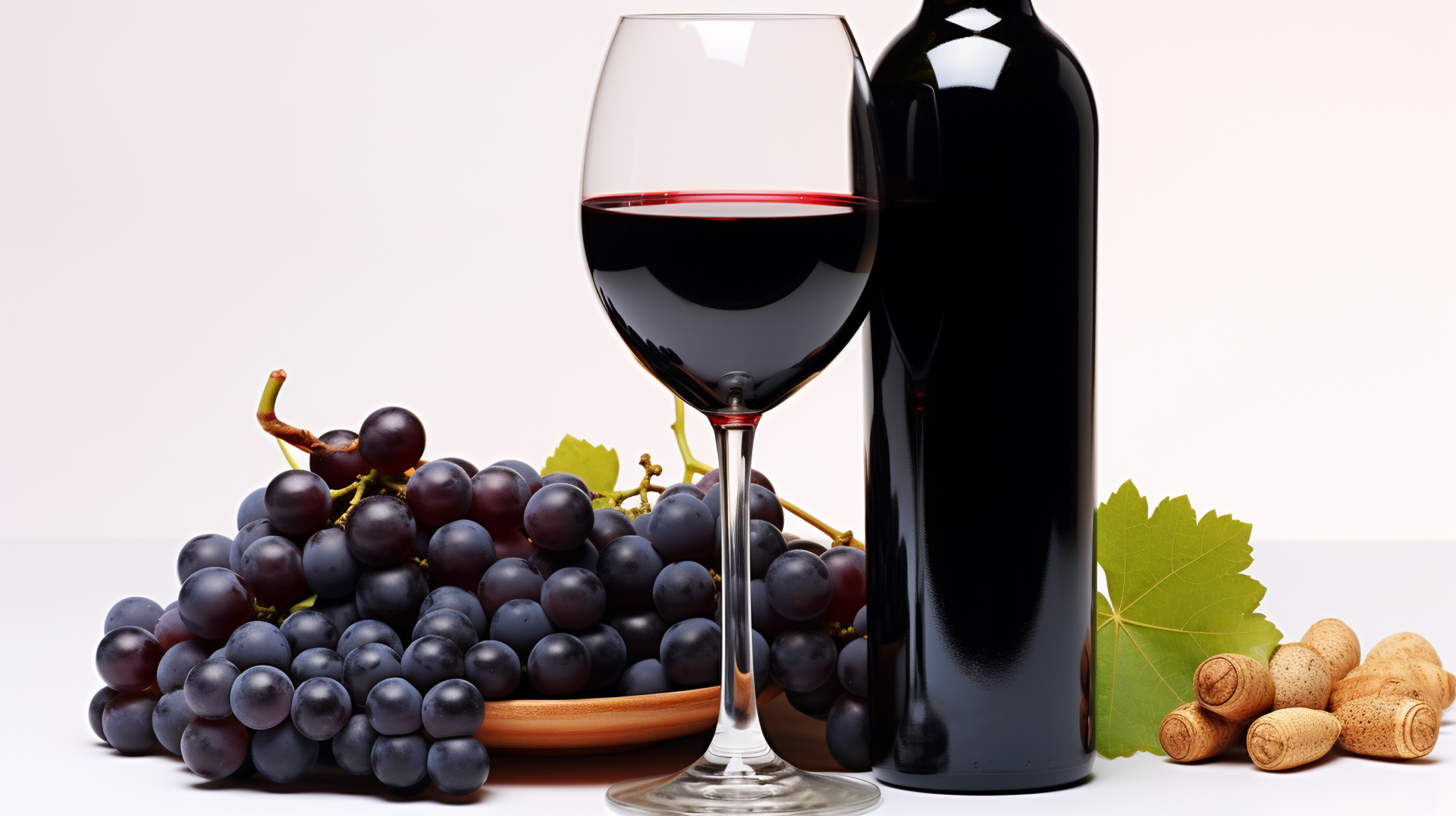Wine-lovers, welcome! Are you ready to discover the delicious delights of Zinfandel? This guide will take you through the basics of this bold and fruity red wine. Learn all about the origins and terroir, characteristics and food pairings, producers and wines, and the versatility of Zinfandel. So, pour a glass, and let’s get started on the journey into the wonderful world of Zinfandel!
Understanding Zinfandel Wine
You can gain a deeper understanding of Zinfandel wine by exploring its characteristics, production, and regions; comparison with other red wines; food pairing, and tips for buying. Zinfandel is a red wine with bold and fruity flavors. It is often lighter in color than Cabernet Sauvignon and Merlot and has moderate tannin and high acidity, giving it a bold taste. It has higher alcohol levels, ranging from 14-17% ABV, and is often blended with other grapes, such as Cabernet Sauvignon, Merlot, Syrah, or Primitivo.
Zinfandel pairs well with spiced barbecue dishes and curry, lighter meats, and cheeses like Manchego and bandage-wrapped cheddar. When buying, pay attention to the ABV and consider the sub-regions like Napa Valley, Dry Creek Valley, and Russian River Valley. Sweet white Zinfandel is also available and is usually lighter and sweeter than its red counterpart. Whether you’re drinking white or red, Zinfandel is a versatile varietal with something for everyone.
The Origins of Zinfandel
Tracing Zinfandel’s origins back to its domestication in the Caucasus region around 6000 BCE, it is a variety of grape with a long history. Its arrival in the U.S. can be traced to the Imperial Nursery in Vienna, Austria, and it was recommended as a table grape in Boston by 1835. Plantings of Zinfandel in California boomed during the Gold Rush, and it became the most widespread variety by the end of the 19th century. It was almost wiped out during Prohibition, but home winemaking remained legal.
Zinfandel’s versatility makes it a favorite among wine enthusiasts. It can be used to produce a range of styles, from red and dry to off-dry white. Red Zinfandel wines often exhibit flavors of blackberries, raspberries, and spice, while White Zinfandel wines have a fruity profile. It pairs well with spicy or saucy grilled or barbecued meats, creamy and salty cheeses, and desserts like cheesecake.
| Origin | Taste | Style |
|---|---|---|
| Caucasus | Raspberry, blackberry, pepper | Red, dry, still |
| Vienna | Fruity | Off-dry white |
| Boston | Spice | White zinfandel |
Zinfandel’s Distinct Characteristics
A unique combination of candied fruitiness, spice, and a tobacco-like smoky finish make Zinfandel a truly distinct red wine. There is also a white Zinfandel, often referred to as white Zin, and a Zinfandel rose wine. Here’s an overview of the distinct characteristics of Zinfandel:
- Flavors: Zinfandel offers a unique combination of jam, blueberry, black pepper, cherry, plum, boysenberry, cranberry, and licorice. It is lighter in color than Cabernet Sauvignon and Merlot but has a bold taste due to moderate tannin and high acidity.
- White Zinfandel: White Zinfandel is an off-dry, fruity style of Zinfandel made from pink-hued grapes. It has a light sweetness and is often enjoyed as an aperitif. Popular white Zinfandel wine brands include Sutter Home and Beringer.
- Rose Wine: Zinfandel rose wine is made by blending red Zinfandel with a small amount of white Zinfandel for a brighter color. It is often fruity and floral with a hint of sweetness.
Production and Regions of Zinfandel
Zinfandel production is prominent in regions such as Napa Valley, Dry Creek Valley, Russian River Valley, and Lodi. The ZAP Zinfandel Festival is even dedicated to this unique grape. Globally, there are more than 71,000 acres of Zinfandel planted, with the majority in the USA and Italy. Not just red, Zinfandel can also be used for white wines. White Zinfandel is an off-dry, fruity wine that pairs well with salads, cheeses, and desserts.
| Wine | Region |
|---|---|
| Ridge Vineyards | Sonoma Valley |
| Turley Wine Cellars | Amador County |
| Cantine Due Palme | Puglia, Italy |
| Elyse Winery | Lodi |
| Once and Future Wine | Dry Creek Valley |
| Ravenswood | Napa Valley |
| The Prisoner | Napa Valley |
Zinfandel offers a unique combination of candied fruitiness, spice, and a tobacco-like, smoky finish. Its versatility and deliciousness make it a favorite among wine enthusiasts. Whether you choose red or white, Zinfandel is sure to please. And with so many production regions, you can explore different styles and flavors to find the perfect bottle for any occasion.

Comparison With Other Red Wines
Compared to other red wines, Zinfandel’s unique flavor profile offers a blend of candied fruitiness, spice, and smokiness. It is lighter in color than its counterparts, and its moderate tannin and high acidity give it a bold taste. Zinfandel wines generally have higher alcohol levels, ranging from 14-17% ABV, resulting in an oily texture and a bigger, bolder body. It is sometimes blended with other grapes such as Cabernet Sauvignon, Merlot, Syrah, or Primitivo.
When it comes to food pairing, Zinfandel pairs well with spiced barbecue dishes and curry due to its sweeter side and savory-sweet quality. It works well with lighter meats like quail, turkey, pork, bacon, ham, and veal. Spices and herbs like ginger, garlic, rosemary, curry, turmeric, cayenne, clove, nutmeg, cinnamon, vanilla, cocoa, black pepper, coriander, fennel, and saffron all complement the wine. Hard and richly flavored cow and sheep’s milk cheeses like Manchego, Bandage-wrapped Cheddar, and Trentingrana are also excellent pairings.
When buying Zinfandel, consider its Alcohol by Volume (ABV), and look for wines produced in sub-regions like Napa Valley, Dry Creek Valley, Russian River Valley, and Lodi. Zinfandels from high elevation areas, such as Howell Mountain or El Dorado County, offer more savory intensity and richness. White Zinfandel wines are also popular, made from red Zinfandel grapes and often offering fruity flavors. Its versatility makes it a favorite among wine enthusiasts.
Food Pairing Suggestions for Zinfandel
When it comes to food pairing, Zinfandel is a wine that goes with a variety of dishes. From spiced barbecue to creamy cheeses, there are plenty of delicious options to pair with this bold and fruity wine. What’s more, Zinfandel pairs wonderfully with many desserts, making it a great choice for a dinner party.
Zinfandel and Spiced Barbecue
Zinfandel’s bold and fruity flavor makes it the perfect companion to spiced barbecue dishes. For a lighter flavor, try a White Zinfandel. It pairs well with creamy, salty cheeses and can even be used to make sweet desserts. Choose from White Zinfandel Wine, White Zinfandel Brands, White Zin Sweet, and White Zifandel to find the perfect match for your meal.
When it comes to spiced barbecues, the sweetness of Zinfandel complements the savory, smoky flavors of the dish. Whether it is the classic Red Zinfandel or a White Zinfandel, the wine will add an extra layer of complexity to the food. Here are a few tips for pairing Zinfandel with spiced barbecues:
- Pair with herbs and spices like ginger, garlic, rosemary, curry, turmeric, cayenne, clove, nutmeg, cinnamon, vanilla, cocoa, black pepper, coriander, fennel, and saffron.
- Complement with richly flavored cow and sheep’s milk cheeses like Manchego, Bandage-wrapped Cheddar, and Trentingrana.
- Balance the flavors with desserts like cheesecake.
Cheese Selections With Zinfandel
Have you ever wondered what kind of cheese pairs best with Zinfandel? Well, Zinfandel is a versatile grape that pairs well with creamy and salty cheeses, as well as desserts like cheesecake. The key is to choose cheese that complements the sweet and spicy notes of Zinfandel.
| Cheese | Flavor | Pairing |
|---|---|---|
| Manchego | Buttery | White Zin |
| Bandage-wrapped Cheddar | Sharp | Red Zin |
| Trentingrana | Salty | White Zin |
For a classic pairing, try a white Zinfandel with Manchego, a buttery Spanish cheese. Or, for a bolder option, opt for a red Zinfandel with Bandage-wrapped Cheddar, a sharp and tangy cheese. Trentingrana, an Italian cheese with a salty flavor, is also delicious with white Zinfandel. Enjoy!
Zinfandel and Dessert Pairings
Enjoying Zinfandel with dessert is a great way to bring out the wine’s sweet and spicy notes. With its rich flavor profile, Zinfandel pairs well with a variety of desserts, from creamy and salty cheeses to cheesecake and other sweet treats.
For a sweet white wine, try pairing Zinfandel with a Sauvignon Blanc or Chardonnay. White Zinfandel is especially popular for dessert pairings because of its fruity and slightly sweet flavor. It pairs nicely with lighter desserts such as fruit-based tarts, cakes, and cobblers.
For a sweeter pairing, try a dry Zinfandel. This type of Zinfandel is often full-bodied and can stand up to richer desserts such as chocolate-based cakes, puddings, and brownies. It pairs well with hard and richly flavored cheeses, too.
No matter what type of dessert you choose, Zinfandel makes a great pairing. Its bold, sweet, and spicy notes bring out the best in any dessert. A perfect pairing of Zinfandel and dessert can make for an unforgettable experience.
Top Tips for Buying Zinfandel Wine

If you’re looking to buy Zinfandel wine, there are a few tips to keep in mind. Pay attention to the Alcohol by Volume (ABV) since this indicates the wine’s intensity. Look for wines from high altitude areas like Howell Mountain and El Dorado County for savory intensity and richness. Zinfandel is also often blended with other grapes, such as Cabernet Sauvignon, Merlot, Syrah, and Primitivo with Negroamaro in Italy. If you’re looking for a sweet white Zinfandel, there are several varieties to choose from.
Check out white Zin wine from producers like Ridge Vineyards and Turley Wine Cellars. Best white Zinfandel brands such as Elyse Winery and Once and Future Wine Company also offer excellent options. White Zinfandel wine from Cantine Due Palme and Ravenswood are also worth trying. Make sure to look for the grape’s name on the label to guarantee the highest quality.
Zinfandel’s Role in the United States
How significantly has Zinfandel impacted the United States? Zinfandel has left an undeniable mark on the wine industry in America. It is now the most widely planted grape in the country, and its influence can be seen in wines from California and beyond. The variety was first brought to California during the Gold Rush and has since become a beloved favorite.
Zinfandel can be used to make both red and white wines. White Zinfandel, or “White Zin,” is a popular off-dry style with fruity flavors. It is often seen as a “starter wine” for those just getting into the world of wine. Is White Zin sweet? It is typically semi-sweet, but some producers make dry styles of White Zinfandel as well.
The popularity of Zinfandel has continued to grow in the United States. It is now widely available in grocery stores, wine shops, and restaurants. Zinfandel is a versatile grape that can be used to produce a range of styles, from light and fruity to rich and complex. Red Zinfandel wines often exhibit flavors of blackberries, raspberries, and spice, while White Zinfandel wines are typically off-dry with fruity flavors.
Zinfandel’s influence can be seen in classic producers like Ridge and Turley, as well as in popular wines like The Prisoner. It is a beloved variety that continues to be enjoyed and celebrated in the United States. Whether it’s a Red or White Zinfandel, it is sure to please any palate.
The Influence of Terroir on Zinfandel
With terroir playing a crucial role in the flavor profile of Zinfandel wines, you’ll want to pay close attention to the environmental factors that influence production. Climate, soil composition, and vineyard location all shape the character of the wine. Places like Paso Robles and the Central Coast of California are renowned for producing some of the best red wines, while Napa Valley, Amador County, and Contra Costa are also known for their standout Zinfandels. In Italy, Zinfandel is known as Primitivo, particularly from Puglia.
White Zinfandel is also popular. It’s a semi-sweet wine with aromas and flavors of ripe raspberries, strawberries, and watermelon. While it is not a white wine, the term “white” is used to indicate its semi-sweet style. It’s a perfect accompaniment to fruit-based desserts or as an aperitif.
Zinfandel is incredibly versatile and food-friendly. Its bold flavors and high alcohol content make it an ideal pairing with spicy or sauce-slathered grilled or barbecued meats. In addition, Zinfandel’s generous sweetness allows it to pair well with creamy and salty cheeses, as well as desserts like cheesecake.
When seeking out the perfect bottle of Zinfandel, you’ll want to take the terroir into consideration. Different regions and sub-regions produce distinct styles and flavors. Furthermore, high elevation areas, like Howell Mountain or El Dorado County, offer more savory intensity and richness. With so many options, you’re sure to find a Zinfandel that suits your taste!
Notable Zinfandel Producers and Wines
If you’re looking for the best Zinfandel wines, you should check out the iconic producers like Ridge Vineyards and Turley Wine Cellars. Their wines are highly rated and praised for their unique flavor profiles. You should also try the classic wines like The Prisoner and Elyse Winery’s St. Peter’s Church Zinfandel.
Prominent Zinfandel Wineries

Many notable wineries produce top-quality Zinfandel wines, such as Ridge Vineyards and Turley Wine Cellars.
- Ridge Vineyards is renowned for its classic bottlings from Sonoma Valley and Dry Creek Valley, while Turley Wine Cellars makes exuberant and age-worthy wines.
- In Italy, Zinfandel is known as Primitivo, particularly from Puglia. Cantine Due Palme’s 2019 San Gaetano Primitivo di Manduria showcases the variety’s earthy and leathery character.
- White Zinfandel is a popular style of Zinfandel and pairs well with lighter fare. Elyse Winery’s St. Peter’s Church Zinfandel offers flavors of licorice-scented kirsch and chocolate ganache. The Prisoner, created by Dave Phinney, is a widely popular Zinfandel-based wine, too.
- Other white wines, like Sauvignon Blanc, can also be sweet. Once and Future Wine Company specializes in some of the sweetest Chardonnays.
Top-rated Zinfandel Wines
You can try some of the top-rated Zinfandel wines from notable producers like Ridge Vineyards and Turley Wine Cellars. For a sweeter white zinfandel, try the East Bench Zinfandel from Ridge. The Kirschenmann Vineyard Zinfandel from Turley is full-bodied and juicy.
If you’re looking for a white zinfandel, Cantine Due Palme’s San Gaetano Primitivo di Manduria is a great option. Elyse Winery’s St. Peter’s Church Zinfandel has a licorice-scented kirsch flavor, while Once and Future Wine Company’s Zinfandel is bursting with berry and spice. Ravenswood’s classic Zinfandel blend, The Prisoner, is a bold and sweet white zinfandel wine. And for a dry, rose-style white zinfandel, try the Rose of Zinfandel from Ravenswood. All these wines are great examples of the versatility of Zinfandel.
The Versatility of Zinfandel
With its ability to produce a range of wine styles, Zinfandel is an incredibly versatile grape. It can be used to make both red and white wines, from dry and savory to sweet and fruity. Sauvignon blanc is usually dry, but Zinfandel can be either dry or sweet. White Zinfandel is a type of rosé, but it is not to be confused with a true rosé. White Zinfandel is a slightly sweeter style of wine than a traditional rosé, with flavors of strawberry, raspberry, watermelon, and bubblegum. Is white Zinfandel a dry wine? Yes, it is typically slightly sweet, but not as sweet as a dessert wine.
White Zinfandel is an excellent choice for those who are looking for a light and refreshing wine. It pairs well with salads, fruits, and lighter dishes. Rose vs white Zinfandel? Both are light and sweet, but the key difference is that white Zinfandel is made from red grapes and rose is made from white grapes. Whether you are looking for a light and fruity wine or something more complex and robust, Zinfandel has it all!

Nutritional Facts of Zinfandel
When it comes to nutrition, Zinfandel is a powerhouse, packed with antioxidants, vitamins, and minerals. A 5-ounce glass of Zinfandel contains up to 118 calories and is low in fat and carbohydrates. It’s also an excellent source of vitamin C, vitamin B6, and potassium. Zinfandel is also rich in polyphenols, a type of antioxidant that helps protect against cell damage and disease.
Zinfandel also contains resveratrol, a polyphenol that has been linked to anti-aging benefits. White Zinfandel and White Zin are slightly sweeter and lower in alcohol than traditional Zinfandel. They are typically made with a blend of Zinfandel and Sauvignon Blanc or Chardonnay. Pinot Noir is also a popular option for making White Zinfandel. So, whether you’re looking for a healthier alternative to traditional red wine, or just something a little bit sweeter, Zinfandel has something for everyone.
Serving and Storage of Zinfandel
Serving up a glass of Zinfandel is easy — just be sure to store it properly. Red Zinfandel wines should generally be served at slightly cooler temperatures than other red wines, around 65°F. This allows the full flavor of the wine to come through without being overpowered by the alcohol. White Zinfandel wines should be served cold, around 45°F.
When it comes to storage, the best way to ensure the longevity of Zinfandel wines is to store them in a cool, dark place. Red Zinfandel wines can last up to five years if stored properly. White Zinfandel wines should be consumed within two years for best results.
When selecting a White Zinfandel wine, look for the following characteristics:
- Quality: Look for a good White Zinfandel wine with a pleasant balance of sweet and acidic flavors.
- Character: Look for a White Zinfandel with a light body and bright fruit flavors.
- Vintage: Look for a White Zinfandel with a vintage that is as current as possible.
- Price: Look for a good White Zinfandel wine that fits your budget.
Finding the Best Zinfandel Wines
Frequently, the best way to find a great Zinfandel wine is to start by understanding the characteristics of the grape and what it has to offer. Zinfandel is a red wine produced from the grape variety of the same name. It is almost always labeled with the name of the grape on the bottle and is known for its bold and fruity flavors. The grape can be used to produce both red and white wines that vary in style from light and fruity to rich and complex.
| Sweet White Zinfandel | Sauvignon Blanc Sweet |
|---|---|
| Yes | No |
| White Zinfandel Taste | Chardonnay Sweet or Dry |
|---|---|
| Fruity | Dry |
| Is White Zinfandel a Rose |
|---|
| Yes |
When it comes to finding the best Zinfandel wines, it’s important to pay attention to the alcohol by volume (ABV) as this indicates the wine’s intensity. The best Zinfandel wines are produced in sub-regions like Napa Valley, Dry Creek Valley, Russian Ridge Valley, and Lodi. Zinfandels from high elevation areas, such as Howell Mountain or El Dorado County, offer more savory intensity and richness. Zinfandel is sometimes blended with other grapes like Cabernet Sauvignon, Merlot, Syrah in California, and Primitivo with Negroamaro in Italy.
Also you can the online wine store for Zinfandel wine options from here…
Frequently Asked Questions
What Is the Ideal Temperature to Serve Zinfandel Wines?
Serve Zinfandel wines at an average temperature of 55-65°F. Many fans of Zinfandel enjoy the bold and fruity flavors of the wine best when served slightly cool. For a more special occasion, try serving Zinfandel at the higher end of the temperature range. You’ll be sure to impress!
Is Zinfandel Suitable for Vegans and Vegetarians?
Yes, Zinfandel is suitable for vegans and vegetarians – it’s a red wine made from grapes with no animal products used in its production. Its bold, fruity flavors make it a great pairing for many vegan and vegetarian dishes.
How Long Can Zinfandel Wine Be Stored For?
Zinfandel can be stored for up to 10 years if properly stored. Store it in a cool, dry, and dark place, and make sure the bottle is kept upright. Its flavor may change over time, so enjoy it soon!
Are There Any Health Benefits to Drinking Zinfandel?
Yes! Zinfandel has antioxidants that help protect your body from free radicals and inflammation. It also has compounds that boost your immune system and support heart health. Enjoy a glass for a healthier you!
How Much Sugar Does Zinfandel Contain?
Curious about the sugar content in zinfandel? You’re not alone! Uncover the sweet surprise of this beloved red wine and discover how much sugar it really contains.


